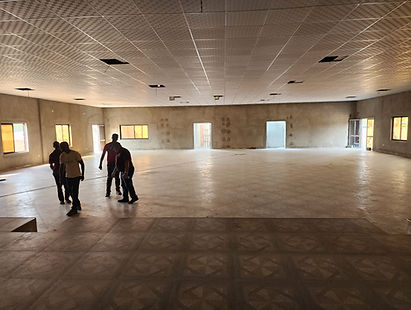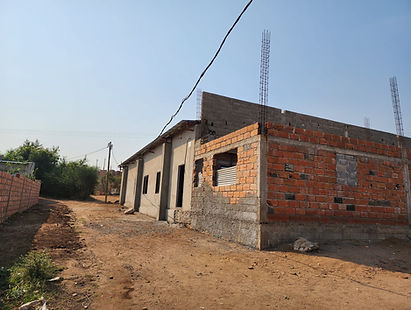Rescue Gospel Mission:
Their History & Vision
Imagine being so passionate about the gospel that you walk up to seven miles in every direction just to share Jesus with neighboring villages. That was the daily reality for one rural African pastor.
When Robert McKinney, founder of McKinney Family World Harvest Foundation, visited his church, he was deeply moved by the pastor’s dedication.
Living in a tiny one-room shack, the pastor asked for nothing more than a couple of bicycles to go even farther with the gospel. That moment sparked something in Robert. He saw not just the need, but the passion of local believers to reach their own people. The Bible calls us to make disciples, not just converts. It’s not enough to show the Jesus Film and move on. What’s needed are churches within walking distance, rooted in the community, representing Jesus every day because for many, their village is their whole world.
To plant lasting churches, we need well-equipped pastors. A few translated sermons on an MP3 player just won’t be enough. When Robert saw the Bible school Pastor Dumi was building in Zimbabwe through Rescue Gospel Mission, he recognized it as more than a good idea, it was the beginning of a movement. Instead of settling for temporary structures, Robert helped fund a permanent brick building designed for 50 students, built to stand for generations.
Since 2017, graduates from that school have planted over 300 churches across Zimbabwe, and more than 100 additional churches in Mozambique, Malawi, Uganda, Zambia, and Namibia.
Building on that success, Rescue Gospel Mission has started a new Bible school in Tete, Mozambique for 100 students, set to launch in 2025. Next on the horizon: Malawi.
The vision is simple and powerful, a Bible school within a day’s travel of every rural pastor.

.jpg)


Inside the Tete Bible School
Outside the Tete Bible School
This is Pastor Blessing. He is the local leader, and is actually a graduate of the Zimbabwe Bible school. He is carrying out the Great Commission there in Mozambique. He is also running a small scale chicken farm to help bring support to their ministry.

Pastor Blessing, his wife Verionca, and Michael

Pastor Blessing and Michael
This is Pastor Blessing’s church. He started off discipling a few people in his home, then built this grass hut style building, which was flooded by the rains, and rotted. These ministry partnerships have now helped him build a permanent structure that will last for generations.

Pastor Blessing's church before

Pastor Blessing's church now
This is Moatize church, a suburb basically, across the river. Here is the church they were in before Rescue Gospel Mission built them a permanent structure . The building is not yet completed of course, but with walls and a roof, just in time for monsoon season. They've already outgrown their space once, and started their second church a few miles away.

Once a church reaches 30 members, it gets a pole barn. At 100, a permanent building. With growth like this, a lot of construction is ahead.
You might be wondering, how is all this funded?
Over the past decade, small businesses have been launched with local Africans to support pastor training, church planting, and outreach. While the vision is strong, challenges like poverty mindsets and limited experience have kept many ventures from reaching their full potential, often requiring outside support to fill the gaps.
But with 100 new pastors soon graduating each year, that approach isn’t sustainable.
Small-scale chicken farms have shown real promise, and large-scale farms offer even greater potential. They generate reliable income and keep African money circulating within Africa.
What’s needed now is someone on the ground full-time to lead and grow these operations.
That’s where we come in.

_20250324_153059_0000_edited.png)